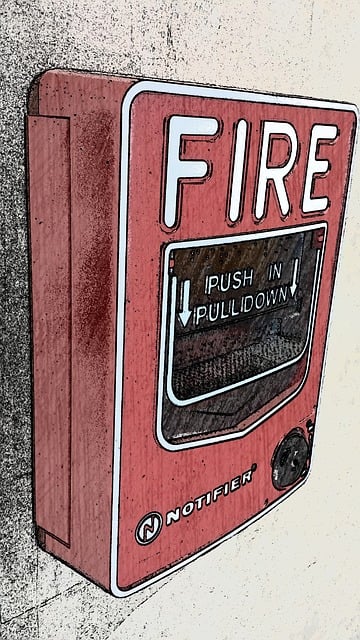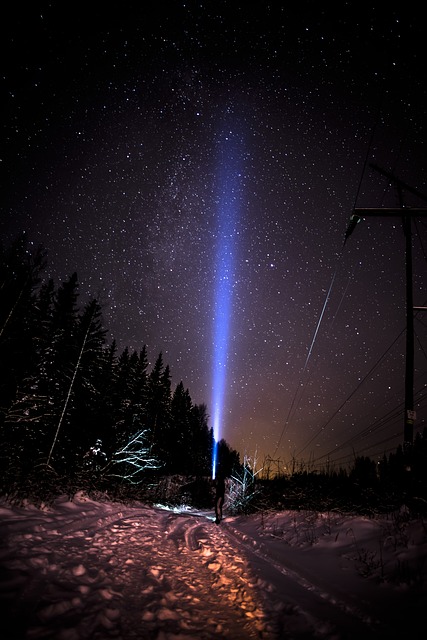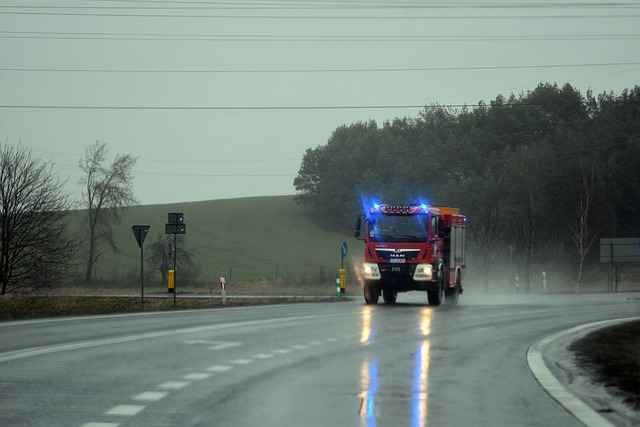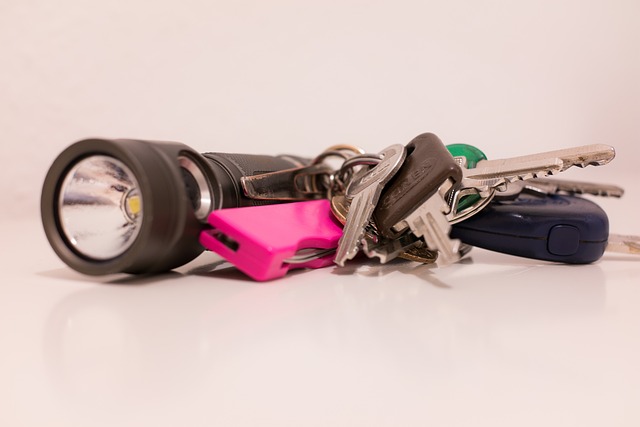Flashlights for emergency preparedness are an indispensable resource in disaster scenarios, providing immediate visibility and ensuring safety during unexpected power outages or navigation through dark environments. High-quality models, crafted from resilient materials like aircraft-grade aluminum with a hard-anodized finish, are designed to withstand harsh conditions and provide a secure grip even in wet situations. These flashlights offer various lighting modes for different needs, including high-intensity beams for long-distance visibility or signaling and lower settings to conserve battery life. Key features such as USB rechargeability and water resistance ensure functionality, while built-in emergency functions like a strobe or SOS signal can be lifesaving in distress scenarios. Investing in flashlights with durable lithium or rechargeable batteries that maintain consistent light output is crucial for sustained use during emergencies. Regular maintenance and proper storage are essential to keep the flashlight ready for immediate use, making it a reliable tool for emergency preparedness and a critical component of any safety kit. The real-life impact of flashlights in emergencies, such as guiding rescue operations or securing valuables during evacuations, emphasizes their importance as a beacon of hope and safety in the face of unpredictable events. Thus, including a reliable flashlight in your emergency preparedness plan is a practical measure for personal safety and effective response to emergencies.
When disaster strikes, reliability and clarity are paramount. Among the essential tools for preparedness, flashlights for emergency situations stand out for their versatility and effectiveness in navigating uncertainty. This article illuminates the critical role of these devices, from their key features to the importance of battery longevity and storage strategies. We’ll explore how a quality emergency flashlight can be more than just a light source, offering practical applications beyond illumination that could prove pivotal in disaster scenarios. With real-life examples underscoring their importance, understanding flashlights for emergency preparedness is crucial for safeguarding against the unpredictable.
- Understanding the Role of Flashlights in Disaster Situations
- Key Features to Look for in a Quality Emergency Flashlight
- The Importance of Battery Type and Power in Flashlights for Emergency Use
- Strategies for Storing and Maintaining Your Emergency Flashlight
- Creative Uses of Flashlights Beyond Illumination in Disaster Scenarios
- Real-Life Examples Where Flashlights Made a Difference in Emergency Situations
Understanding the Role of Flashlights in Disaster Situations

Flashlights for emergency preparedness play a pivotal role during disaster situations, serving as indispensable tools for visibility and safety. In the event of power outages or when navigating through darkened areas, flashlights provide immediate illumination, enabling individuals to move safely amidst debris or when searching for trapped persons. Their utility extends beyond mere light sources; they can signal rescuers during nighttime operations or help in the execution of critical tasks that require a clear field of vision. Moreover, reliable flashlights are designed with durability and portability in mind, making them suitable for the unpredictable environments encountered during emergencies. They are compact enough to be stored easily in an emergency kit and activated without reliance on electronic systems that might fail during a disaster. In preparing for unexpected events, having a high-quality flashlight on hand is a practical step towards ensuring personal safety and effective response when every moment counts.
Key Features to Look for in a Quality Emergency Flashlight

When preparing for emergency situations, having a reliable flashlight is crucial. A quality emergency flashlight should be compact, durable, and easy to operate, as you may need it in tight spaces or with one hand. Look for models that are made from high-impact materials such as aircraft-grade aluminum, which can withstand harsh environments and rough handling. These flashlights often come with a hard-anodized finish that not only protects against scratches but also enhances grip in wet conditions.
In terms of functionality, the best emergency flashlights offer multiple lighting modes to adapt to different scenarios. A high-intensity beam is essential for long-range visibility or signaling, while a lower-intensity setting can conserve battery life when steady, dim light is needed. Additionally, features like USB rechargeability and water resistance are important, as they ensure the flashlight remains functional even after exposure to water or if the batteries run low. For those who prioritize preparedness, models with built-in emergency functions such as a strobe or SOS signal can be invaluable during distress situations. Flashlights for emergency preparedness that incorporate these features are not just tools but investments in your safety and well-being during unpredictable events.
The Importance of Battery Type and Power in Flashlights for Emergency Use

When disaster strikes, the reliability of your gear can be a matter of safety and survival. Among the critical tools for emergency preparedness, flashlights play an indispensable role. The type of battery used in a flashlight significantly influences its performance during unexpected events. High-quality batteries, such as lithium or rechargeable ones, ensure consistent output and longevity, which are paramount when traditional power sources fail. In emergencies, the last thing one needs is for their flashlight to fade or die prematurely. Therefore, opting for flashlights for emergency preparedness that feature long-lasting batteries with high energy density is a strategic choice for those who prioritize readiness and resilience in unpredictable circumstances. Additionally, the power of the light emitted by these devices is crucial. A bright beam can illuminate dangerous terrain, signal for help, or assist in critical tasks like navigation or medical aid. Flashlights with adjustable intensity settings offer versatility, allowing users to conserve battery life when dim light is sufficient and to maximize it when a powerful beam is necessary. This adaptability is key in ensuring that the flashlight remains a dependable companion through any emergency scenario.
Strategies for Storing and Maintaining Your Emergency Flashlight

When disaster strikes, a reliable source of light can be the difference between safety and peril. Flashlights for emergency preparedness are indispensable tools in any crisis situation, providing visibility during power outages or when navigating through dark environments. To ensure your flashlight is ready when you need it most, strategic storage and regular maintenance are key.
Optimal storage conditions are essential to preserve the functionality of your emergency flashlight. Store your flashlights in a cool, dry place away from direct sunlight. Extreme temperatures can affect battery performance and potentially damage the device. Keep your flashlights in an easily accessible location so you can grab them quickly if an emergency occurs. Regularly check the batteries, ensuring they are fresh or fully charged, as power loss is common during emergencies. Additionally, perform a test run of your flashlight occasionally to ensure it operates as expected. Replace batteries according to the manufacturer’s recommendations and inspect the flashlight for any signs of wear or damage that could impair its use. By following these strategies for storing and maintaining your emergency flashlight, you can guarantee that it will be a dependable ally when disaster preparedness becomes a necessity.
Creative Uses of Flashlights Beyond Illumination in Disaster Scenarios

In disaster scenarios, flashlights serve as more than mere sources of light; they are versatile tools that can significantly enhance one’s chances of survival and rescue. Beyond their primary function of illumination, flashlights for emergency preparedness play a critical role in signaling for help, navigating through darkened environments, and even as a means to start a fire when combined with suitable tinder and kindling. During an emergency, visibility can be drastically reduced, making it essential to have a reliable light source. A flashlight can guide individuals through unlit pathways, avoid hazards, and allow them to perform tasks that require clear sight. Moreover, the focused beam of a flashlight is invaluable for sending visual signals that can be seen from a distance, potentially drawing the attention of rescuers.
When the situation calls for it, the capabilities of flashlights extend beyond their luminescent properties. For instance, high-intensity models can disorient intruders during a home invasion or provide a temporary deterrent in tense situations. The durability and compact nature of modern flashlights also make them suitable for tasks like checking gas leaks or inspecting structural damage without putting oneself at risk. Flashlights for emergency preparedness are designed to be durable, often constructed with impact-resistant materials and waterproof casings to endure the challenging conditions that accompany disasters. Their multi-functionality—from providing light in a power outage to signaling for help or even aiding in minor survival tasks like firestarting—makes them indispensable tools for anyone’s emergency kit.
Real-Life Examples Where Flashlights Made a Difference in Emergency Situations

In countless emergency situations, flashlights for emergency preparedness have proven to be indispensable tools. Take, for instance, the aftermath of a major earthquake, where the infrastructure may be compromised and power outages are common. In such scenarios, a reliable flashlight can illuminate darkened pathways, allowing individuals to navigate through debris or avoid hazards like broken glass or unstable structures. The story of a family trapped under rubble in an earthquake-stricken city exemplifies this point; it was the beam from a single flashlight that guided rescuers directly to their location, facilitating their timely extrication and medical attention.
Similarly, during unexpected blackouts caused by severe weather events, such as hurricanes or tornadoes, flashlights become critical for maintaining safety. They enable people to perform essential tasks like checking on neighbors, searching for valuables, or locating essential supplies without stumbling in the dark. A harrowing account from a wildfire evacuation zone illustrates this perfectly; with only their flashlights as guidance, residents were able to quickly locate their most important belongings and ensure their homes were empty before fleeing. These real-life examples underscore the importance of including flashlights for emergency preparedness in every household’s safety kit, emphasizing their role not just as a tool but as a vital link between individuals and their safety during emergencies.
In light of the critical role flashlights play in disaster preparedness and response, it’s clear that owning a reliable emergency flashlight is not just a prudent choice but an indispensable one. This article has illuminated the key features to seek in a quality flashlight for emergencies, emphasizing the importance of battery longevity and power efficiency. Strategies for proper storage and maintenance ensure that your flashlight is ready when you need it most. Beyond their primary function of providing light, flashlights can be ingeniously repurposed in various ways to aid in survival during crises. The real-life examples showcased underscore the practical benefits of having a flashlight as part of one’s emergency kit. In conclusion, investing in a high-quality emergency flashlight, such as those designed specifically for preparedness, is a step towards enhancing your safety and resilience in unpredictable situations.
